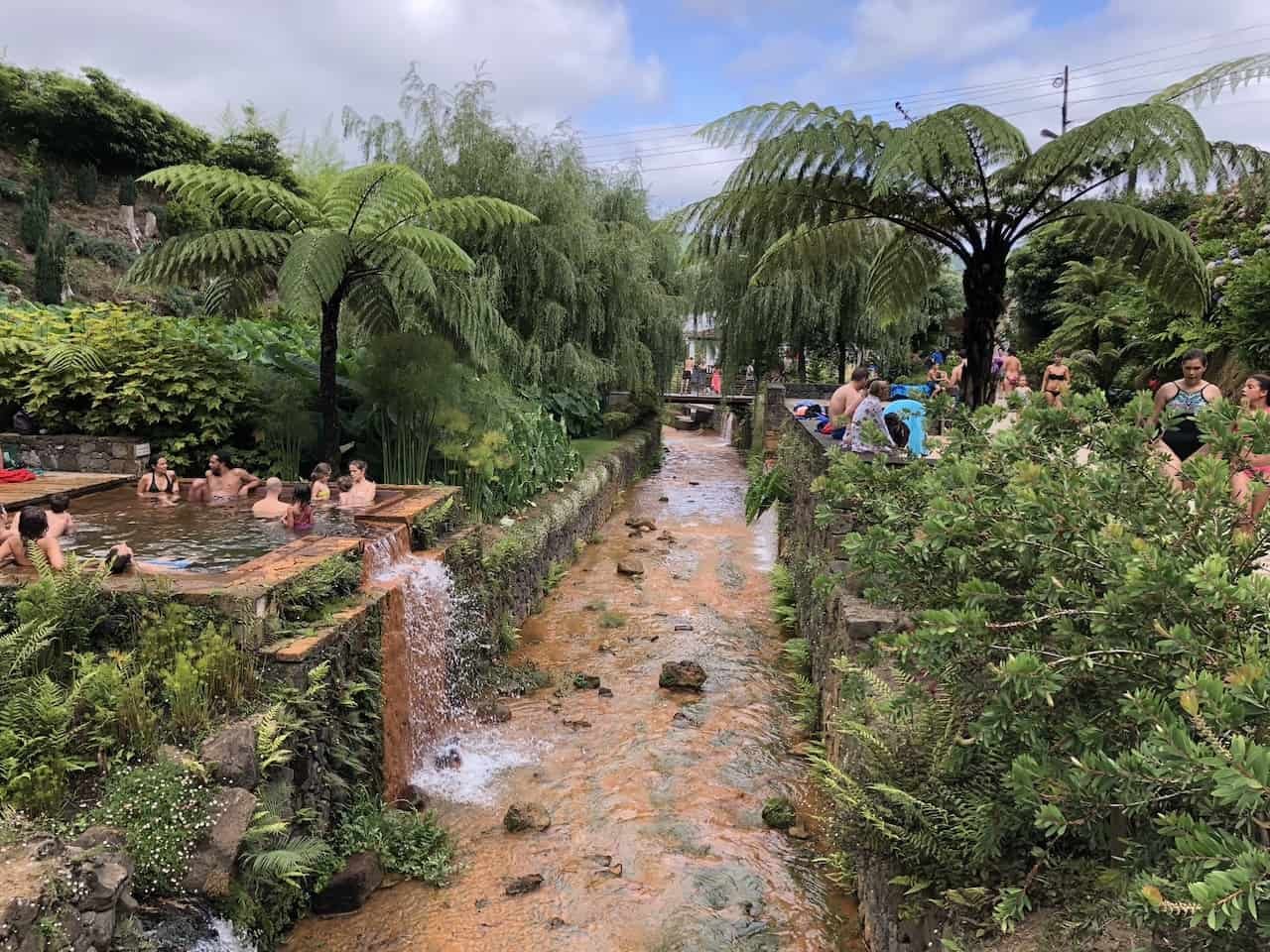São Miguel, The Azores (Day Three): Hot Springs Soaking in Furnas
If you missed day two of our trip to the Azores, check it out here.
On day three, we took a roadtrip to Furnas, which is the thermal hotspot of the Azores. The town itself is nestled in a dormant volcanic crater that last erupted in 1630. The residual volcanic activity is still present in the form of steaming fumaroles, thermal pools, and natural mineral springs.
Terra Nostra Park
Our first stop was Terra Nostra Park, which is one of the largest and oldest botanical gardens in the Azores, featuring about 30 acres of lush grounds to explore. Its collection of over 600 varieties of camellias is one of the largest in Europe, and it also holds an Azorean Endemic and Native Flora Garden.
Furnas Valley was a popular destination by the end of the 18th century due to the use of mineral water in treating health problems. The first house on the Terra Nostra property was built around 1775 by Thomas Hickling, a wealthy merchant from Boston. In the 19th century, it was purchased by a viscountess and then inherited by her son, both of whom expanded and improved the house and gardens. Hickling is the one who built the thermal water pool, which is the central feature of the park. The water is between 95 and 104 degrees all year round and supplied by a thermal spring, though the water does get cooler the further away you are from the supply spouts.
The cost to enjoy both the gardens and the pool is €10, which is a bargain for all the time you could spend here. The only difficulty we had was finding parking, as you need to park on the street, and we weren’t sure what was public parking vs. private. There are changing rooms and outdoor showers a short walk down from the pool, and it’s important to know before you go that the iron in the water will stain your swimsuit. The recommendation is to wear black or something old that you don’t mind getting ruined.
Overall, I really enjoyed Terra Nostra. The pool was huge, and it never felt crowded. I really could have spent even longer than we did getting lost in the gardens, soaking in the pool, and people-watching.
Poças da Dona Beija
The other hot spring we visited was Poças da Dona Beija, which was a very different experience. This almost felt like the touristy/regimented experience of the Blue Lagoon in Iceland. It costs €8 for an hour and a half of access to the facility, which they monitor fairly strictly by giving you different colored wristbands and coming around to dismiss your color once your time is up. It’s another €2 for a locker rental, which I would recommend, as there are lots of people coming and going and very little visibility for your belongings if you leave them near the entrances to the pools. We rented a locker, since we had backpacks full of our things, and we actually left our phones there (so the photo above is courtesy of Google). They also had private showers with doors and changing rooms.
There are six natural thermals pools in this facility, and each of them is at a different temperature, indicated by a sign outside the pool. Some pools were cooler than others, the coolest being 77 degrees and the hottest 102 degrees. The pools were all relatively small and shallow, so there were times when we couldn’t enter a pool because of how many people were already inside (which I imagine is why they are strict about the number of visitors at a time). The iron clay that can be found on the sides/bottom of these pools can be used as a skin/facial mask, though it didn’t give me a tan like I hoped it would. Poças da Dona Beija is actually open until 11 pm (late entry at 10), so if we’d been staying closer to Furnas, a night-soak would have been an unmissable experience!
Cozido das Furnas
Our final stop in Furnas was at Tony’s for dinner. There, Mary (the resident meat-eater) sampled the traditional dish of Furnas, Cozido das Furnas. This Portuguese stew is slow-cooked for 6 hours in outdoor fumaroles, so it’s literally cooked by the heat from the volcanic soil. The dish usually includes pork, beef, chicken, sausages, potatoes, carrots, cabbage, and kale. Mary’s review of Tony’s rendition of this Furnas staple was mixed: the chicken was amazing, blood sausages were not her favorite, and the pork was dry. I had what turned out to be standard tourist fare—fried white fish and boiled potatoes—so nothing spectacular.
We headed back to Ponta Delgada fairly early to pack up and prepare for our flight the following day to our second island: Terceira!
Thanks for reading!
Up Next: Lava Tubes, Volcanic Hiking, and Sightseeing in Angra do Heroísmo











